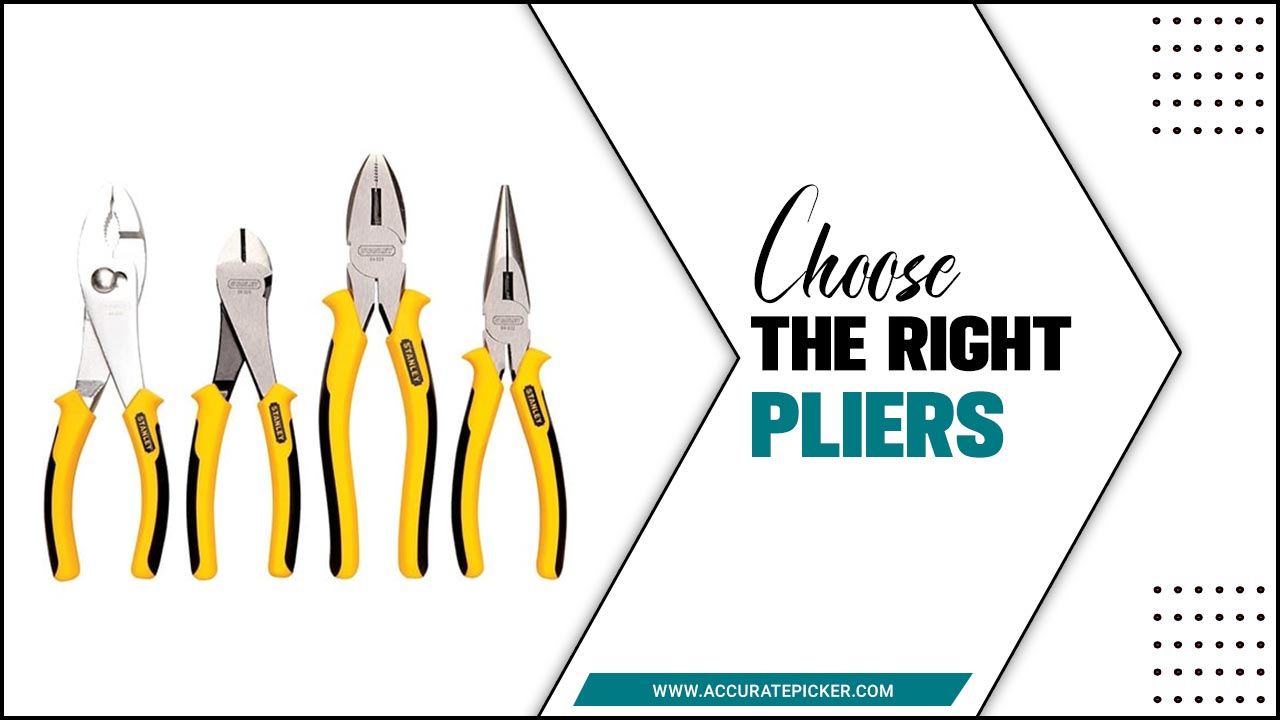Pliers are a type of hand tool used for gripping, cutting, and bending. They come in a variety of shapes and sizes to suit different applications. In this article, we will be discussing the different types of pliers and their specific applications.
We will be looking at the different types of pliers, such as needle nose pliers, slip joint pliers, and lineman’s pliers, as well as the different uses for each type. We will also be discussing the advantages and disadvantages of each type of plier. By the end of this article, you will have a better understanding of the different types of pliers and how to use them for your specific needs. So, if you are looking to learn more about pliers and their various applications, read on to find out more.
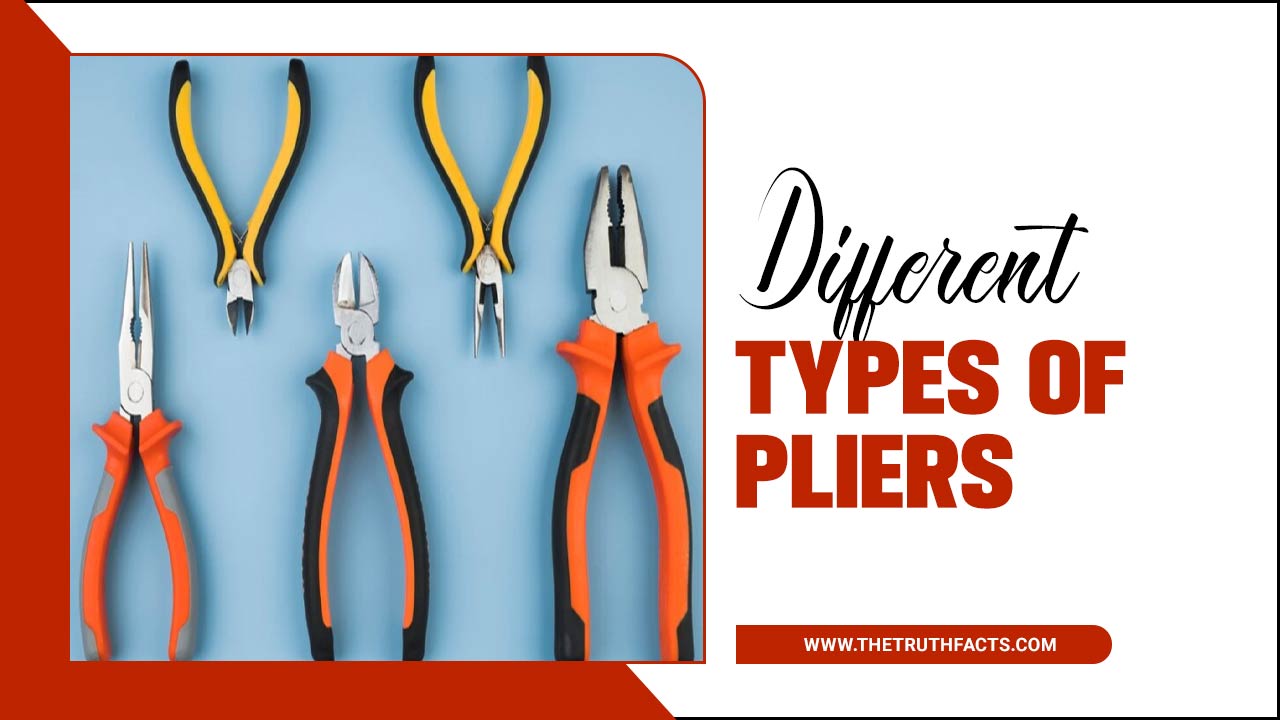
Pliers: Types & Uses

This article discusses the different types of pliers and their specific applications. Pliers are an essential hand tool used in various industries, from construction to engineering. They come in a variety of shapes and sizes, and each type has its own unique purpose. We will explore the different types of pliers, their features, and the specific applications for which they are best suited.
We will also discuss the safety precautions that should be taken when using pliers. By the end of this article, you should have a better understanding of the different types of pliers and how they can be used to complete various tasks.
Needlenose Pliers
Needlenose pliers are a type of hand tool mainly used to work in tight spaces or to grip small objects. They are long and slender with pointed tips and are often used for bending, cutting, and gripping wires and other small objects. The pointed tips allow for precise manipulation and the long handles provide extra leverage.
Needlenose pliers are also used to turn screws in tight spaces and are great for working with electronics. They are often used in jewelry making, automotive repair, and other crafts. Needlenose pliers are a must-have for any toolbox. They are versatile, easy to use, and can help you get the job done quickly and accurately.
Uses
Pliers are extremely versatile tools that can be used for a variety of purposes. Depending on the type of pliers, they can be used for gripping, cutting, bending, fastening, or crimping. Needle-nose pliers feature long, slender tips designed for precision work, such as gripping small objects or manipulating wire. Slip-joint pliers can be adjusted to fit many different sizes of nuts and bolts.
Linesman pliers feature a cutting edge for cutting wire and a gripping surface for pulling and twisting. End-cutting pliers are designed for cutting wires, bolts, and other small objects flush to the surface.
Long-nose pliers can be used to reach into tight spaces, while flat-nose pliers are used for gripping, bending, and forming. All of these pliers can be used for a variety of applications, including automotive and electrical work, jewelry making, and home repairs.
Tips
When selecting pliers, it is important to consider the task and application you have in mind. Different types of pliers are designed for different tasks. Slip-joint pliers are a versatile option for everyday tasks, such as gripping, turning, and bending. Needle-nose pliers are used for working in tight spaces and for getting a good grip on small objects.
Long-nose pliers are ideal for working in hard-to-reach areas. Combination pliers are a great all-round tool for gripping, cutting, and bending wire. Diagonal cutting pliers are specifically designed for cutting wire and other small materials.
Lineman’s pliers are designed for cutting, gripping, and twisting wire. Crimping pliers are designed to crimp insulated and non-insulated terminals and connectors. Finally, locking pliers are adjustable and designed for tasks requiring a firm grip. When selecting pliers, make sure to choose the right type for the job.
Advantages
Pliers are one of the most popular and versatile tools in any toolbox. They come in various styles and sizes and are used for a multitude of applications, from cutting to gripping to bending. The advantages of pliers are numerous. For starters, the tool is compact and lightweight, making them easy to handle and store.
Additionally, pliers are strong and durable, capable of withstanding heavy-duty jobs. Their design also makes them great for reaching into tight spaces, making them ideal for tasks that require precision. Lastly, their jaws can be adjusted for different types of tasks, making them extremely versatile. With all these advantages, it’s no wonder why pliers remain a popular choice in any toolbox.
Disadvantages
Pliers are incredibly useful tools, but, like most tools, they do have some disadvantages. Firstly, they are limited in the tasks they can perform. While different types of pliers can do various jobs, they are designed to do specific tasks and may not be suitable for other applications.
Additionally, pliers can be dangerous when used incorrectly, as they can cause injury to the user. Lastly, pliers require maintenance in order to remain in good condition. It is important to ensure that the cutting edges are sharp and the handles are not cracked or deformed. All of these factors should be taken into consideration when using pliers.
Slipjoint Pliers
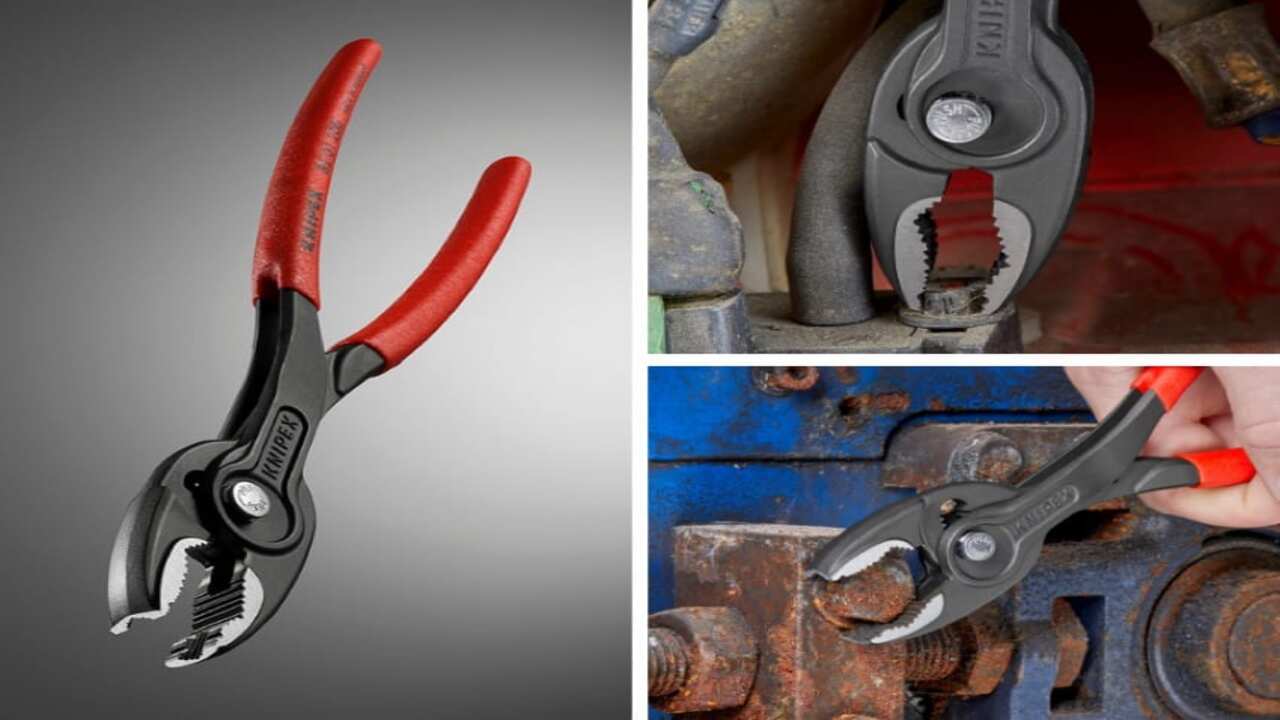
Slipjoint Pliers are a versatile type of plier that can be used for a variety of tasks. They are designed with a pivot point and a sliding jaw feature that allows a user to adjust the size of the gripping area. This makes them a great choice for gripping irregular shapes or sizes. They are also useful for cutting and gripping in tight spaces.
They can also be used to bend, crimp, and hold small parts. They are commonly used in automotive, electrical, and construction applications. Slipjoint Pliers are usually made of forged steel and can be used with different types of materials.
They come in a variety of shapes and sizes and can fit into tight spaces. They are easy to use and require minimal maintenance. With their adjustable jaw, they can be used for multiple applications and are a reliable and durable tool.
Uses
Pliers are a versatile tool, and their uses are virtually unlimited. They are most often used to bend, cut, and hold materials such as wire, sheet metal, and small objects. Pliers come in a variety of shapes and sizes, each suited to specific tasks.
For example, needle-nose pliers are ideal for reaching into tight spaces where traditional pliers cannot reach. Long-nose pliers are perfect for gripping and manipulating small objects. Slip-joint pliers are designed to be adjustable, which makes them ideal for working with a variety of materials.
Combination pliers are great for gripping and cutting wire, and can also be used to cut bolts and other fasteners. Finally, lineman’s pliers are perfect for gripping and cutting cables.
Tips
When it comes to using pliers for a specific purpose, it is always a good idea to use the right type of tool for the job. In general, pliers are commonly used for gripping, bending, and cutting. There are several types of pliers, each designed to perform a specific task. Flat nose pliers are great for gripping and bending wire, while needle nose pliers are ideal for reaching into tight spaces.
Wire cutters are used to cut through electrical wiring, while lineman’s pliers are designed for cutting and stripping wires. Multi-purpose pliers are also available and can be used for a variety of tasks. It is important to remember to wear the appropriate safety equipment when using any type of pliers, such as protective gloves and glasses. Additionally, pliers should be kept clean and lubricated to prevent rust.
Advantages
Pliers are an essential tool that can be used for a variety of tasks. They come in different varieties, each designed for specific applications. The most common types of pliers are needle-nose pliers, flat-nose pliers, slip-joint pliers, and locking pliers. Each type of pliers has its own advantages and unique capabilities.
Needle-nose pliers are designed for intricate work in small spaces, while flat-nose pliers are commonly used for gripping and bending. Slip-joint pliers are adjustable and can be used for multiple tasks, while locking pliers offer more stability and control when working with heavy-duty objects.
All pliers offer great leverage, making it easier to work with objects that require greater force to manipulate. Additionally, they are lightweight and easy to carry, making them a great addition to any toolbox.
Disadvantages
The main disadvantage of pliers is that they are not suitable for all uses. They are limited in their gripping ability and can cause marring or scratching of the material they are working on if not properly treated. Additionally, pliers can be difficult to use in tight spaces as they are often too large and bulky.
Furthermore, pliers require a certain level of skill to use correctly and safely. If not used correctly, pliers can cause serious injury to the user or damage to the material they are working on. Finally, pliers are not very durable and can easily become damaged if not cared for properly.
Endcut Pliers

Endcut pliers are an essential tool for cutting through electrical wire, allowing users to safely strip away the insulation. They feature a narrow beveled blade that helps to slice through insulation without damaging the wire. The blades are typically made from hardened steel, allowing them to stay sharper for longer and make precise cuts.
Endcut pliers also include a crimping component that can be used to secure electrical connections and terminals. They are an indispensable tool for anyone working on home electrical systems or in an industrial setting. With their easy-to-use design, endcut pliers can make completing electrical tasks a breeze.
Uses
Pliers are indispensable tools that can be used in various applications, from cutting and gripping to forming and bending. Each type of pliers serves a unique purpose and is engineered to provide precise control and maximum comfort, enabling users to get the job done quickly and efficiently.
Here we will look at the various types of pliers and their specific uses. Needle-nose pliers feature long, slender jaws, with pointed tips, ideal for getting into tight spots. They are great for gripping and manipulating small objects, such as jewelry or electronics.
Combination pliers have a unique design that allows them to be used for gripping, cutting, and bending. Long-nose pliers have a similar design to needle-nose pliers, but with longer, more durable jaws.
They are ideal for reaching into tight spaces and gripping hard-to-reach objects. Slip-joint pliers are the most common type of pliers, designed with an adjustable joint that allows the user to adjust the jaw size and reach different areas. They are great for gripping and turning nuts and bolts, as well as cutting wires.
Diagonal pliers, also known as side-cutting pliers, are designed with angled blades for cutting wire and other materials. They are also great for making precise bends in metal. Finally, locking pliers are designed with a self-locking mechanism that allows the user to keep a grip on an object.
They are great for gripping and holding objects in place, such as when doing heavy-duty work. With the right type of pliers, you can take on any task with confidence, knowing that you have the right tool for the job.
Tips
When working with pliers, it is important to select the right type for the job. Slip joint pliers are the most common type, and are suitable for most basic tasks. Needle nose pliers are longer and thinner, and are useful for reaching into tight spaces. Combination pliers feature a flat gripping surface and are ideal for cutting and gripping.
Long nose pliers are similar to needle nose, but are even longer and allow for more precise control. Lineman’s pliers are designed for gripping and cutting electrical wires. Finally, Vise-Grip locking pliers provide extra grip and are perfect for tasks that require a secure hold. When selecting pliers, it is important to consider the task at hand and choose the best tool for the job.
Advantages
Plier types provide a wide array of applications in various settings. Pliers are versatile hand tools that are used to grip, twist, and cut materials. They come in many shapes and sizes to meet a range of needs. Some of the primary advantages of using pliers are the ability to bend metal, the ability to form loops, and the ability to cut through tough material.
Pliers also provide a great amount of control when working with small items like jewelry. They are also very durable and require minimal maintenance. These features make them easy to use and highly effective in a variety of applications. Pliers are also inexpensive and easy to find, making them a great addition to any toolbox.
Disadvantages
When using pliers, it is important to consider the disadvantages. Pliers are generally not suitable for use with fragile objects like jewellery, as their gripping power can easily damage materials. Additionally, pliers can be difficult to control accurately, making them a poor choice for precision tasks.
Another disadvantage of pliers is the risk of pinching, as the user may accidentally pinch their skin, or the material they are working with, while using the tool. Furthermore, pliers are limited to gripping items that are relatively thin in comparison to their jaws. Lastly, pliers require more force than other tools, such as a screwdriver, which can be tiring and time-consuming for larger tasks.
Linesman Pliers
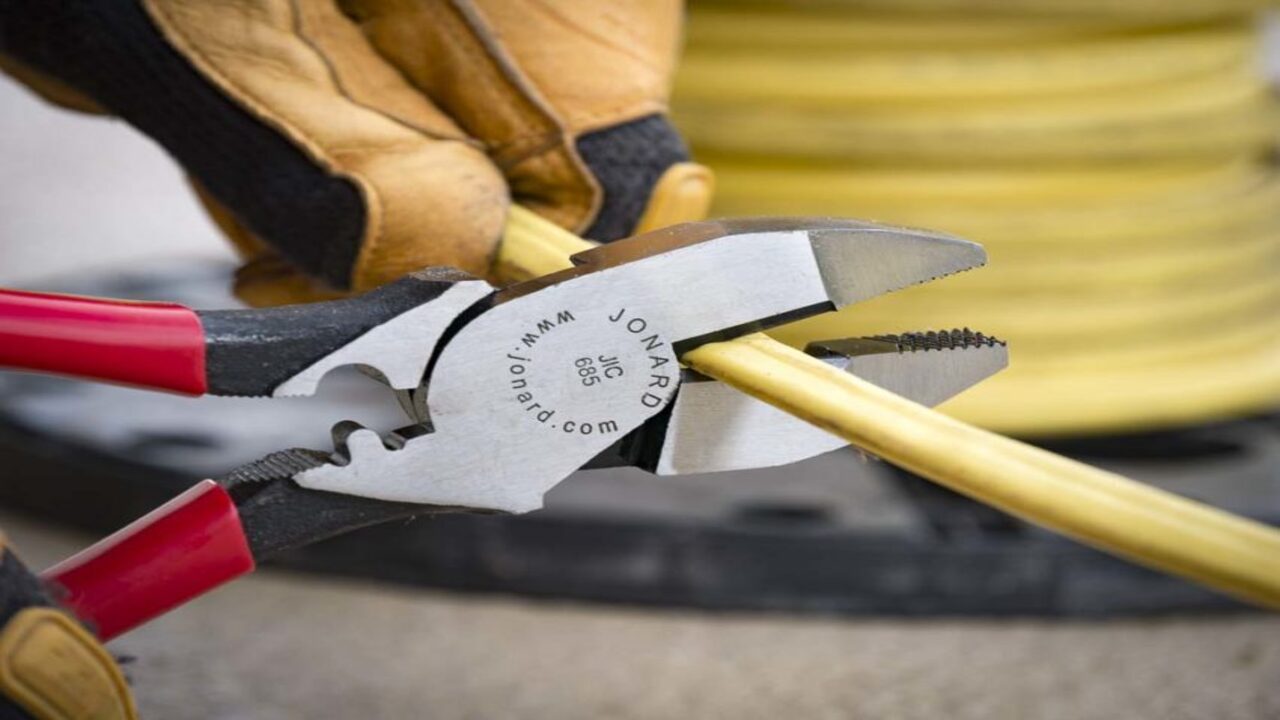
Linesman pliers are commonly used by electricians and technicians in the telecommunications industry. They are designed with long handles and sharp, serrated jaws that are capable of cutting through wire and other materials with ease.
They also feature a crimper at the base of the jaws, which is used to grip and twist small wires and cables. In addition to these features, the handles of linesman pliers are often insulated to protect users from electric shock.
These pliers are particularly useful for cutting and stripping wires when installing electrical systems. They can also be used to grip and tighten nuts and bolts, and can often be found in automotive repair shops.
Uses
Pliers are a versatile tool widely used in many applications. The most common types of pliers are needle-nose, slip-joint, lineman’s, side-cutting, and locking pliers. Each type of plier is designed with a specific application in mind. Needle-nose pliers are used for working in tight spaces and for gripping small objects.
Slip-joint pliers are designed for gripping large objects and can be adjusted to fit different sizes. Lineman’s pliers are designed for cutting and gripping wire in electrical applications. Side-cutting pliers are designed for cutting through wires and other materials.
Lastly, locking pliers are designed for holding objects in place, as they feature a locking mechanism that holds the pliers in place. Each type of plier is designed to make specific tasks easier, so it is important to choose the right one for the job.
Tips
When using pliers, it is important to remember a few important safety tips. Always wear safety goggles when using any type of pliers to avoid any potential eye injuries. Also, make sure to use the correct type of pliers for the task at hand. Using the wrong type of pliers may result in an inadequate job or worse, a dangerous situation.
Additionally, inspect the pliers for any signs of damage before use. This will ensure that the pliers are in good working condition and that they are safe to use. Finally, if needed, use pliers with plastic or rubber grips to ensure a safe and secure grip. Following these tips will ensure that you use pliers safely and effectively.
Advantages
Pliers have many advantages in terms of their application. The first and foremost benefit is their versatility. Pliers can be used for a wide variety of tasks, from gripping and turning nuts to cutting wires and bending sheet metal.
Additionally, they are fairly durable, as long as they are cared for properly. In addition, pliers come in various sizes, styles, and materials, making them suitable for any job. Furthermore, they are relatively inexpensive, making them a cost-effective tool for a variety of tasks.
Finally, pliers are easy to use and require minimal instruction or training to use properly. All of these advantages make pliers a great tool for any job around the house or on the job site.
Disadvantages
Plier tools come in many different shapes and sizes, each designed for specific tasks. While pliers can be useful in many projects, it is important to remember that they also have some disadvantages.
Pliers are difficult to use on small or intricate objects, as they can easily slip or damage delicate surfaces. They also require a lot of strength to use properly, and if not used correctly can cause injury.
Pliers can also be difficult to use in confined spaces and can cause damage if misused or overused. Additionally, if pliers are not maintained properly, they can become dull or develop rust, reducing their effectiveness.
Diagonal Pliers
Diagonal pliers are used for cutting and gripping wires and components. They have a different shape compared to other types of pliers. The jaws of diagonal pliers are cut at an angle. This allows them to be used for cutting wires in tight spots and for working with small components.
The angled blades also allow for better access to the wires when gripping them. They are ideal for cutting through small, hard to access wires without damaging them. Many diagonals pliers also feature a beveled edge which allows them to grip flat or round surfaces with more control.
They are also useful for gripping pins and nails. Diagonal pliers are an essential tool for electricians, mechanics and other tradespeople who require precise cutting and gripping.
Uses
Pliers are a common tool used for gripping, twisting, bending, cutting, and turning metal. They can be used for a wide variety of tasks, from tightening screws to cutting through thin metal stock. Depending on the task, there are several types of pliers available.
Some of the most common types of pliers are slip-joint pliers, needle-nose pliers, lineman’s pliers, and locking pliers. Slip-joint pliers are the most versatile type, and are often used for gripping, twisting, and turning applications. Needle-nose pliers are designed with a long, narrow nose for reaching into tight areas and manipulating small objects. Lineman’s pliers are larger and have a sharper cutting edge, making them ideal for cutting through thicker materials.
Finally, locking pliers are designed to lock onto the object they are gripping, ensuring a firm grip. Each type of plier has its own specific uses, so make sure to select the right one for the job.
Tips
If you are looking to purchase a set of pliers, it is important to understand the different types and their specific uses. Slip-joint pliers are the most common type of pliers and are designed for general use. They feature a joint that allows the user to adjust the size of the jaw.
Long-nose pliers, also known as needle-nose pliers, are useful in tight spots and are ideal for gripping and cutting wire. Flat-nose pliers are used to grip, bend, and twist flat pieces of material. For gripping round objects, linesman pliers are the perfect tool. They feature longer handles and stronger jaws than slip-joint pliers.
Finally, diagonal pliers are used for cutting wire and other materials and feature a blade at the end of the jaws. Understanding the different types of pliers and their specific functions will help you make the best selection for your needs.
Advantages
There are various advantages of using pliers for various projects. Pliers are often used for gripping, bending, cutting, and turning, making them a versatile tool for various purposes. Pliers also typically feature a textured or grooved handle, providing a secure grip and making them less likely to slip out of the user’s hand. They also come in a range of sizes, so they can be used for tasks that require a delicate touch or a more robust application.
Pliers are also relatively inexpensive and easy to obtain, making them a cost-effective tool for a variety of projects.
Disadvantages
Pliers can be a great tool for a variety of tasks, but they also have some disadvantages. One of the biggest is that not all pliers can do the same thing. For example, needle-nose pliers are great for gripping small objects, but they won’t be of much use if you need to cut a wire.
In addition, some types of pliers can be too bulky for certain tasks, such as working with delicate electronics. Pliers also require a certain amount of strength to use, which can be a problem for those with weaker hands or wrists. Finally, pliers can be expensive, and you may need to buy several different types to complete a variety of tasks.
Conclusion
Pliers are essential tools for many DIY and professional tasks. They come in a variety of shapes and sizes, each designed for a specific application. Common types of pliers include needle-nose pliers, slip-joint pliers, lineman’s pliers, and locking pliers. Needle-nose pliers are used for precision tasks such as gripping and manipulating small objects.
Slip-joint pliers are ideal for gripping and turning nuts and bolts. Lineman’s pliers are designed for cutting and gripping wires. Lastly, locking pliers are used for clamping and holding objects in place. With the right type of pliers, any task can be made easier and more efficient.
FAQ’s
1.What Are The Main Types Of Pliers?
Ans: The main types of pliers are slip-joint pliers, long-nose pliers, linesman pliers, diagonal cutting pliers, bent-nose pliers, end-cutting pliers, and locking pliers. Slip-joint pliers are the most common and versatile type of pliers and are used for a variety of tasks.
Long-nose pliers are used for gripping and manipulating small objects. Linesman pliers are designed for cutting and twisting wires. Diagonal cutting pliers are used for cutting through thin metals and wires.
Bent-nose pliers are used for reaching and grasping objects in tight spaces. End-cutting pliers are used for cutting through thin wires. Lastly, locking pliers are used for gripping and turning objects.
What Is The Difference Between Needlenose And Slip-Joint Pliers?
Ans: Needlenose pliers are designed with a long, tapered nose for accessing tight spaces and narrow openings. Slip-joint pliers have adjustable jaws, allowing them to accommodate different sizes of nuts and bolts.
Needlenose pliers are often used for delicate and precise tasks such as bending wires, while slip-joint pliers are best suited for loosening and tightening nuts and bolts. Both types of pliers are useful tools in any toolbox.
3.What Are The Different Uses Of Side-Cutting Pliers?
Ans: Side-cutting pliers are a type of hand tool used primarily in electrical and mechanical work. They are mainly used for cutting and trimming electrical wiring, but they can also be used for gripping and bending wires. Additionally, they can be used to cut plastic, cardboard, and other types of thin materials. Finally, they are also commonly used to remove nails and screws.
4.What Is The Purpose Of Long-Nose Pliers?
Ans: Long-nose pliers are a type of hand tool used for gripping or cutting materials, such as wire. They are designed with a longer nose and thinner jaw than regular pliers, allowing them to reach into tight spaces and hold onto small objects.
The jaws of long-nose pliers are also tapered to a point, allowing them to be used for cutting and trimming wires. Their versatility makes them a popular choice for many DIY and repair projects.
5.How Do Locking Pliers Work?
Ans: Locking pliers work by clamping down on an object when the handles are squeezed together. When the handles are released, a locking mechanism holds them in place to keep the pliers securely clamping the object.
This mechanism can be released by squeezing and holding the handles together while pressing a button on the back of the handles. This allows them to be re-opened and re-positioned to clamp a different object.



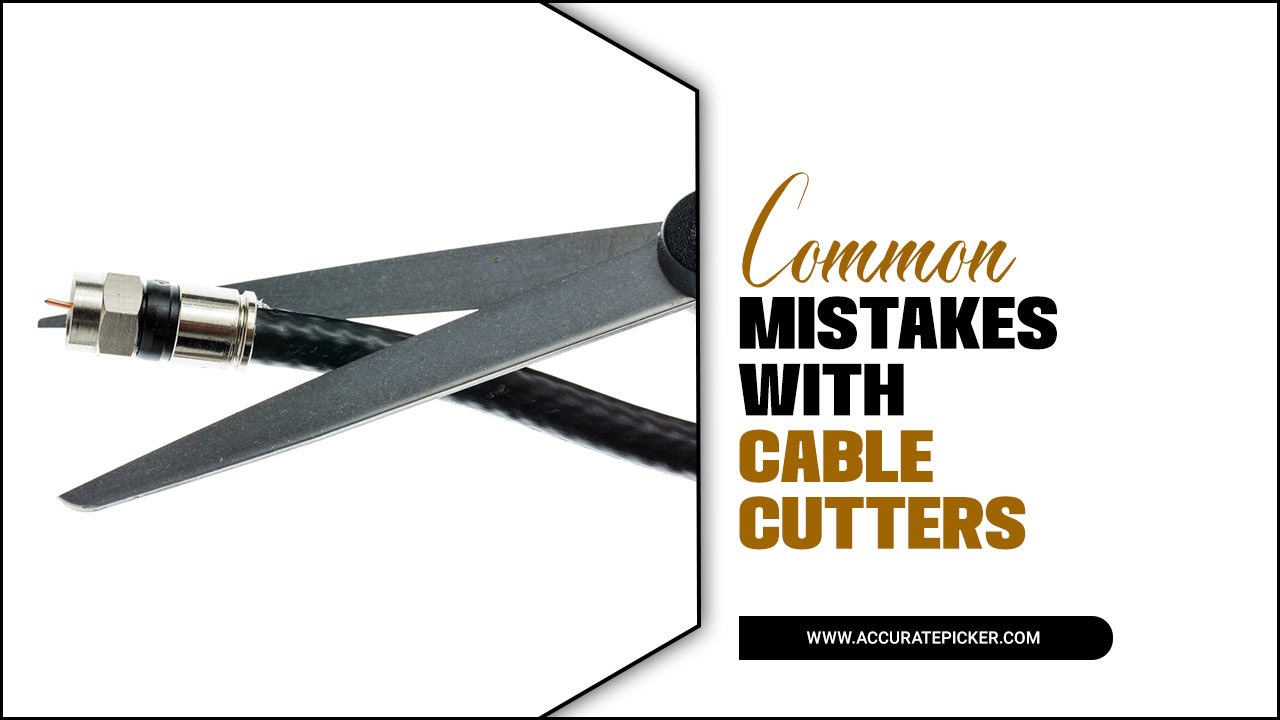
![Top 9 Best Diagonal Cutters [Review With Buying Guide]](https://accuratepicker.com/wp-content/uploads/2022/03/Best-diagonal-cutters.jpg)
